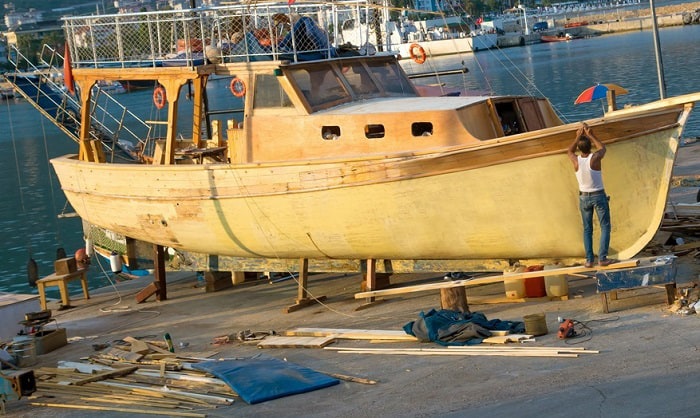Step-by-Step Guide for Making a Wooden Boat with Custom Features

Beyond the Plans: Unveiling Hidden Gems in Wooden Boatbuilding
Building a wooden boat is a journey, not just a project. While countless guides detail the *how*, few delve into the nuanced 'whys' and the often-overlooked aspects that truly elevate a vessel from functional to exceptional. This review of "Step-by-Step Guide for Making a Wooden Boat with Custom Features" (let's call it the "Guide") aims to do just that, exploring uncommon considerations and offering fresh perspectives for both novice and seasoned builders.
Q&A: Unpacking the Unspoken Challenges
Instead of a traditional review, let's tackle some crucial, often-ignored aspects of wooden boat construction through a question-and-answer format, drawing insights from the Guide and beyond.
Beyond the Wood: The Unsung Hero of Boatbuilding - The Fasteners
Q: The Guide covers wood selection meticulously. But what about the often-overlooked fasteners? How crucial is their selection and how does it impact the longevity of the boat?
A: The Guide touches on this, but it deserves more emphasis. Fastener selection is paramount. The wrong screws, bolts, or rivets can lead to premature failure, especially in a dynamic environment like water. Researching marine-grade stainless steel fasteners, understanding their corrosion resistance properties (consider using a resource like the ISO standards for marine-grade materials), and the appropriate drilling techniques are crucial. Think beyond the basic instructions â€" explore different fastening methods like epoxy-coated screws or through-bolting with backing plates for added strength in high-stress areas. This is where the Guide could benefit from a more in-depth look at material science principles, beyond just the practical application. One could even integrate data on failure rates of different fastener types based on real-world data from boatyards or marine surveys.
The Art of the Joint: Beyond Simple Butt Joints
Q: The Guide predominantly focuses on basic joinery. How can builders push the boundaries of traditional techniques and explore more sophisticated joinery to improve structural integrity and aesthetics?
A: While the Guide adequately explains fundamental joinery, it could benefit from exploring advanced techniques like scarf joints, shiplap, or even the intricate world of traditional boatbuilding joinery from specific regions (e.g., clinker building). These methods offer superior strength, watertightness, and a unique aesthetic appeal. Consider researching historical shipbuilding methods â€" they offer a wealth of knowledge on durable and elegant solutions often overlooked in modern guides. Exploring the work of renowned boatbuilding experts and referencing historical shipbuilding texts would enrich this aspect considerably.
Sustainability and the Environment: Building Green Boats
Q: The Guide lacks a discussion on sustainable practices. How can boatbuilders minimize their environmental footprint?
A: This is a critical omission. The Guide should emphasize sourcing sustainably harvested wood, exploring eco-friendly finishes (like natural oils instead of toxic varnishes), and minimizing waste during construction. It could also introduce concepts like using recycled materials where appropriate and exploring the growing field of bio-based composites as potential additions to the build. Incorporating lifecycle analysis of materials, discussing the carbon footprint of different choices, and highlighting responsible disposal methods would contribute significantly to its value.
Real-World Lessons: Stories from the Workshop
A seasoned boatbuilder once told me, "The best lessons come from mistakes." The Guide lacks this experiential learning component. Sharing real-life anecdotes of successful builds, as well as common pitfalls and their solutions, would make it far more engaging and practical. For instance, a case study showcasing the challenges of working with a specific wood species, the solutions employed, and the final outcome would offer invaluable insight that goes beyond theoretical instructions.
In conclusion, while the "Step-by-Step Guide for Making a Wooden Boat with Custom Features" provides a solid foundation, its strength lies in its expansion. By incorporating discussions on advanced joinery, sustainable practices, superior fastener selection, and real-world case studies, it could become a truly indispensable resource for both hobbyists and professionals alike. The future of wooden boatbuilding hinges on innovation and a deep understanding of materials, techniques, and environmental responsibility. This Guide, with these additions, could significantly contribute to this future.
0 Response to "Step-by-Step Guide for Making a Wooden Boat with Custom Features"
Post a Comment